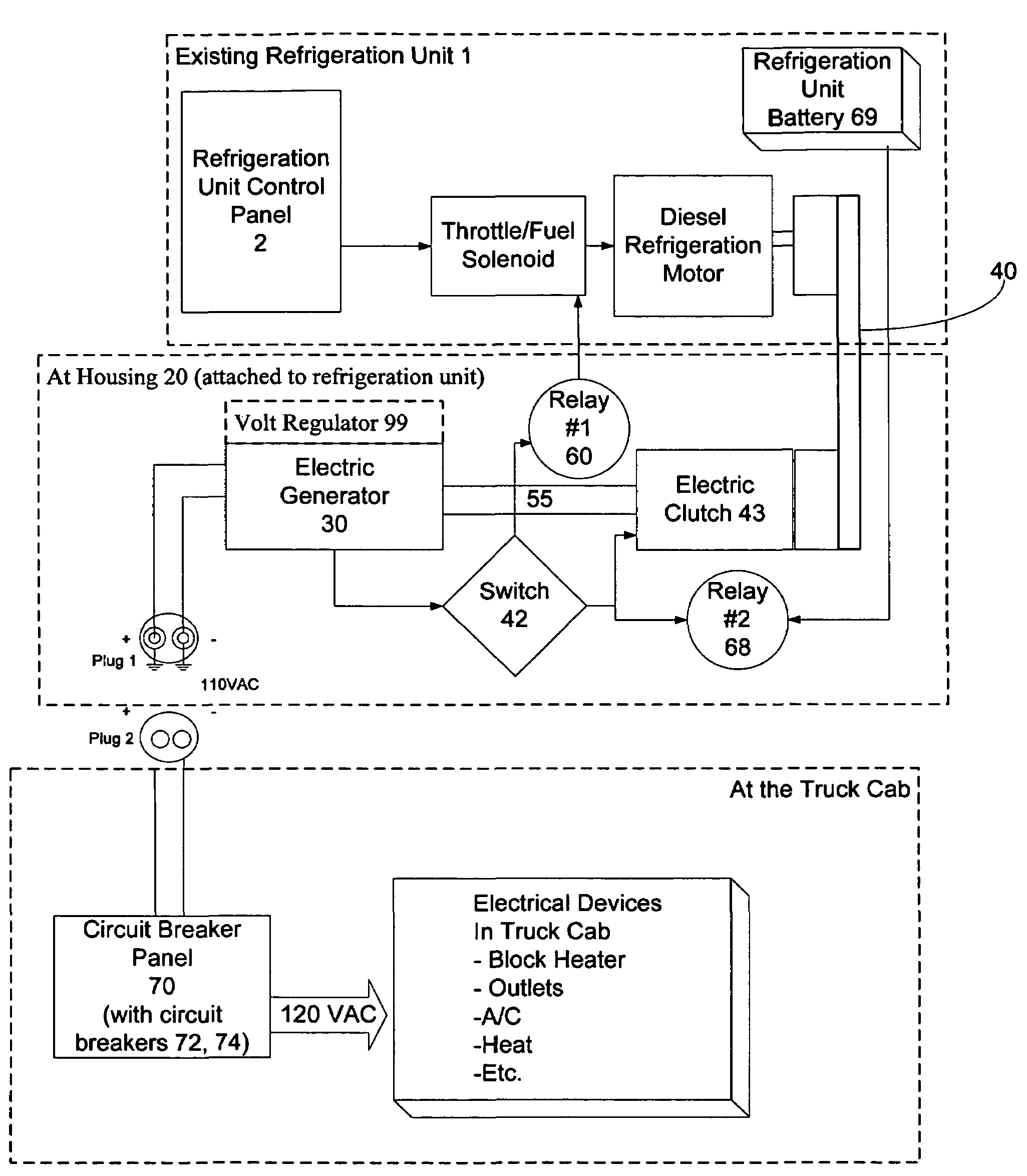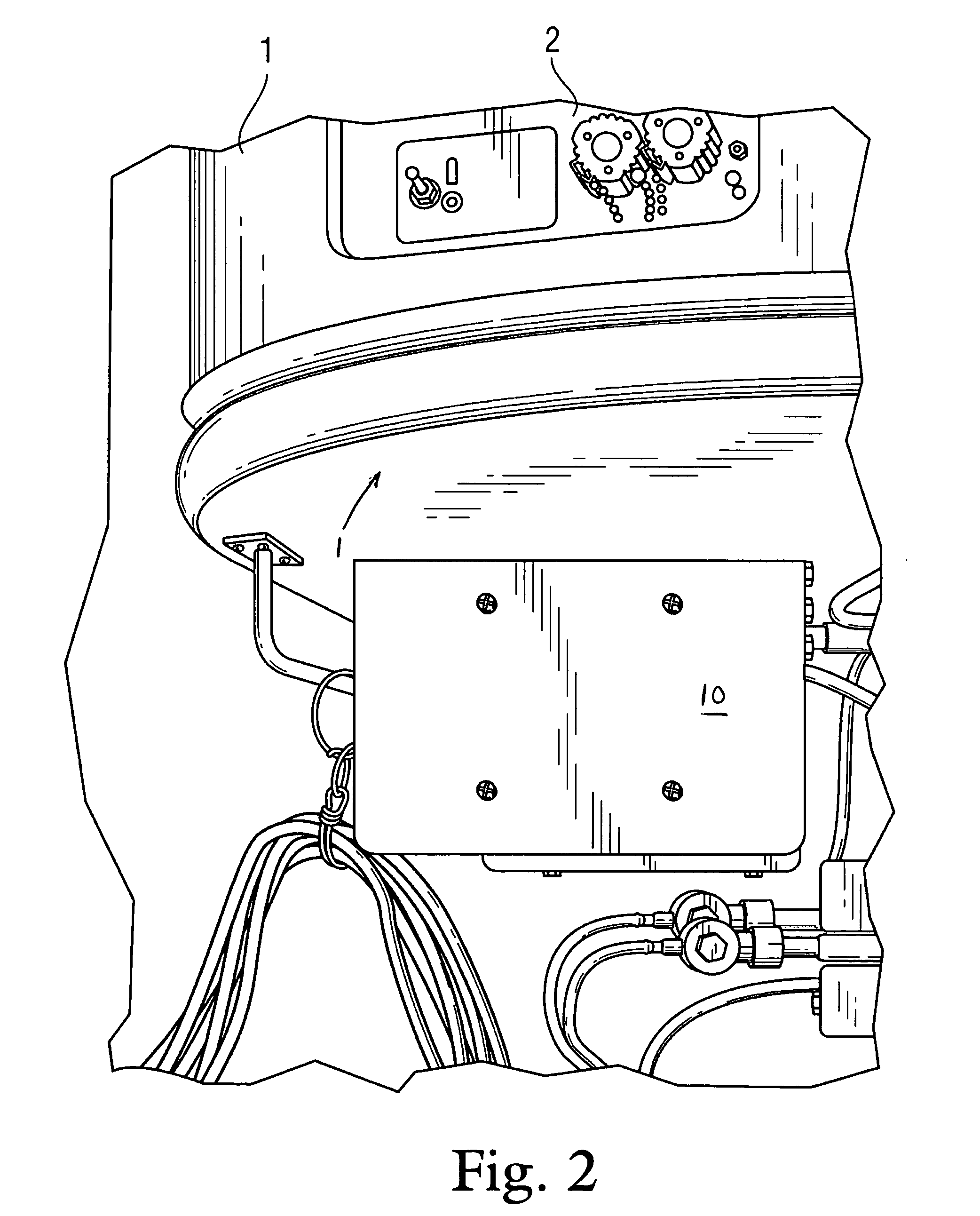Auxiliary power device for refrigerated trucks
a technology for auxiliary power devices and refrigerated trucks, which is applied in the direction of refrigerated goods vehicles, transportation and packaging, lighting and heating equipment, etc. it can solve the problems of releasing burning fuel, and being extremely inefficient, so as to reduce harmful emissions into the atmosphere, prevent overcurrent, and save fuel
- Summary
- Abstract
- Description
- Claims
- Application Information
AI Technical Summary
Benefits of technology
Problems solved by technology
Method used
Image
Examples
Embodiment Construction
[0032]The present invention is an auxiliary power device for refrigerated trucks that acts as a power source to the truck's cab when the truck is parked, thereby allowing operation of heaters, air conditioning, outlets, engine block heaters, battery chargers, etc., all without idling the truck's engine. The auxiliary power device may be provided as original equipment in new refrigerated trucks, or may be a retrofit kit for existing trucks. A retrofit example is described in detail below implemented in conjunction with a conventional Thermoking® Smart Reefer diesel generator-powered refrigeration unit 1 at the front of the trailer, though most any diesel or hybrid diesel-electric refrigeration unit driven by a motor will suffice.
[0033]FIG. 2 is a side perspective view of the auxiliary power device 10 according to a preferred embodiment of the present invention implemented with a Thermoking® Smart Reefer diesel generator-powered refrigeration unit 1 at the front of the trailer. FIG. 3...
PUM
 Login to View More
Login to View More Abstract
Description
Claims
Application Information
 Login to View More
Login to View More - R&D
- Intellectual Property
- Life Sciences
- Materials
- Tech Scout
- Unparalleled Data Quality
- Higher Quality Content
- 60% Fewer Hallucinations
Browse by: Latest US Patents, China's latest patents, Technical Efficacy Thesaurus, Application Domain, Technology Topic, Popular Technical Reports.
© 2025 PatSnap. All rights reserved.Legal|Privacy policy|Modern Slavery Act Transparency Statement|Sitemap|About US| Contact US: help@patsnap.com



